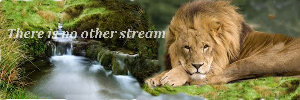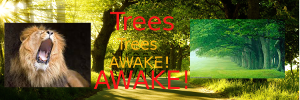A while back, two things occurred to me:
1. Narnia is a world where one can find almost any mainstream mythological creature — unicorns, minotaurs, merpeople, werewolves, sea serpents, centaurs, dragons, winged horses, fauns, nymphs, giants, gnomes, et cetera. Yet despite this menagerie of mythical creatures, fairies are strangely absent.
2. Even though I've been a fan of Narnia for many years now and a lover of fairy lore for longer still, I've never noticed this absence until now.  Maybe I'm just really used to the stories (and of course they're perfect the way they are
Maybe I'm just really used to the stories (and of course they're perfect the way they are  ), but it doesn't feel like an absence. If they depicted fairies in Narnia in the future Netflix adaptations, I think it would feel really weird.
), but it doesn't feel like an absence. If they depicted fairies in Narnia in the future Netflix adaptations, I think it would feel really weird.
Interestingly, the word "fairy" does appear in the books, but it's in reference to our world: Mrs. Lefay is described as having fairy blood in her.
Also, when hunting through the Narnian creatures wikipedia, there are a couple of listings that imply tiny people in Narnia, but no good tiny people: sprites and the "People of the Toadstools" are described as being part of White Witch's rabble. It's curious to me that the only apparent reference to them is so negative (and so is the association with Mrs. Lefay, for that matter).
Any guesses as to why fairies, or at least the good kind, didn't make the cut in Narnia when Lewis was writing the stories? Do they belong there in your imagination?

Well, in some mythologies fairies are considered to be fickle, mischievous critters, so I could see that being the reason Lewis paints them so badly. Of course, insofar as fairy means "Nature Spirit," you could argue that the Dryads and Naiads are a type of benevolent fairy.
Other than that, I'm not sure why the tiny winged folk got left out of what is supposed to be kind of the ultimate "fairy land." Oddly enough, Narnia never felt too empty to me without them.
PM me to join the Search for the Seven Swords!
Co-founder of the newly restored Edmund Club!
Did I mention I have a YouTube Channel?: https://m.youtube.com/channel/UCeuUaOTFts5BQV3c-CPlo_g
Check out my site: https://madpoetscave.weebly.com
signature by aileth
Doesn't Tolkien's "On Fairy Tales" say that a Fairy Tale doesn't have to have fairies in it or be about fairies.
I suspect that the 1950s was like the 60s, when fairy stuff was a bit out of date. But that is an interesting point.
There, shining in the sunrise, larger than they had seen him before, shaking his mane (for it had apparently grown again) stood Aslan himself.
"...when a willing victim who had committed no treachery was killed in a traitor's stead, the Table would crack and Death itself would start working backwards."
I read recently that fairies use to be considered evil. And how most of the original fairy tales were considered to scary for kids, so that is why they were called fairy tales because of how scary they were.
Now if that is true I have no idea, just recently read that somewhere.
I believe in Christianity as I believe in the sun: not only because I see it, but by it I see everything else. -C.S. Lewis
I read recently that fairies use to be considered evil. And how most of the original fairy tales were considered to scary for kids...
Ah, the good old fairy/folk tales, where the consistent underlying moral was that if you were wicked, you got it in the neck--hard. Less value in the more modern, sanitized versions, methinks.
Of course, fairies were capricious and sometimes evil, but I'm not convinced that that's why Lewis didn't put them in. After all, he put in some other very nasty creatures. As far as that goes, even fauns had a rather questionable reputation (glad I didn't have a clue about that aspect when I first read LWW).
To me, Narnia has a feeling of being a solid, down-to-earth sort of place, in spite of talking animals and mythological creatures. Not sure how well the traditional rendition of fairies would have fit in. Mind you, if anyone could have pulled it off, I'm sure Lewis would have been the one.
Now my days are swifter than a post: they flee away ... my days are swifter than a weaver's shuttle
Fairies in early 20th century stories were, like the use in Victorian times, pretty and sweet and sentimental notions. Somehow there just isn't the right environment for them in Narnia. Now, if Enid Blyton had written Narnia, she would have definitely put them in, as she was still writing fairy stuff in the 40s and 50s.
There, shining in the sunrise, larger than they had seen him before, shaking his mane (for it had apparently grown again) stood Aslan himself.
"...when a willing victim who had committed no treachery was killed in a traitor's stead, the Table would crack and Death itself would start working backwards."
I read recently that fairies use to be considered evil. And how most of the original fairy tales were considered to scary for kids, so that is why they were called fairy tales because of how scary they were.
Well, that depends. In the fairy tales of Charles Perrault, which were written for a courtly audience, and are the main source of fairy knowledge for modern people (if it isn't Disney), fairies aren't that intimidating. But in other cultures, especially more rural ones, the fair folk tend to be creepier. (The Brothers Grimm actually contributed a higher number of fairy tales to our culture than Perrault but unlike him, they didn't use many fairies. Not in the most popular edition of their work anyway.)
Of course, fairies were capricious and sometimes evil, but I'm not convinced that that's why Lewis didn't put them in. After all, he put in some other very nasty creatures. As far as that goes, even fauns had a rather questionable reputation
I've heard that the fauns in Narnia are more like the ones in Edmund Spenser's Faerie Queene than the ones in Greek mythology. But Lewis was a fan of both so he might have used fauns in any case.
It seems like Lewis wanted to include the creatures and character types from his favorite stories in Narnia. So I assumed there were just weren't enough stories with fairies in them that really resonated with him for their inclusion. But then again, like Rose Tree Dryad said, Lewis did include a lot of creatures that are similar to or practically the same as fairies. (Gods, goddesses, dryads, specters, sprites, etc.) And he did he have there be fairies in England in The Magician's Nephew. Maybe he did that to imply that while this world may not seem as magical as Narnia, it is. After all, we had fairies and they never did.
For better or worse-for who knows what may unfold from a chrysalis?-hope was left behind.
-The God Beneath the Sea by Leon Garfield & Edward Blishen check out my blog!
I'm pretty sure the reasons are both Lewis' personal favorites and what was popular at the time. I say this because Narnia also seems to not have another mythical creature that has become a staple of fantasy worlds: elves. Narnia has dwarfs, but in most stories that's not the same thing. But like others have said, it doesn't feel like an absence. Narnia is awesome even without these creatures, and in a way it kind of works better. The books don't try to be other books, and no fairies or elves is no big deal IMO.
But this is an interesting question, because it's possible that these creatures do exist in the world of Narnia, though they may be rare in Narnia itself. One thing I kind of love about these stories is that there's a lot we don't know. Like the White Witch's army supposedly had creatures that, if described, "the grown-ups would not let us keep reading this book" (lol that was awesome - scared the you-know-what out of me a s kid, considering the creatures he did describe). He lets the reader's imagination fill in the blanks, so there very well could have been orcs, goblins, trolls, vampires, and Maleficent-like dark fairies there. Aside from that, look at VDT: that's the most complete picture we get of the world of Narnia, and it only has one continent. What's on the western end of the world? The northern and southern ends? And there seem to be different species/races of creature further east; the "duffers" were a kind of dwarf different from the ones in Narnia, and close to Aslan's country were a type of merpeople who couldn't go to the surface. Not to mention, we don't learn about marsh-wiggles until SC, which kind of suggests there may be other less known creatures in that world. So it's entirely possible that fairies, elves and who knows what else are in Narnia.
Yes, I'm a mouse... I mean, a geek!
I'm wondering if maybe Lewis might have done more with fairies when he was writing the Lafay Fragment. Him mentioning that Mrs. Lafay had fairy blood sounds out of character unless she was from another world. It's possible that there were ideas that involved fairies in the Fragment and the only thing that survived in MN was the mention of her ancestry.
